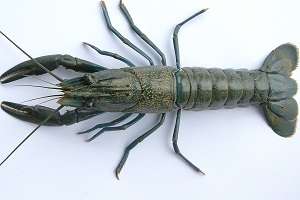Captive hairy marron populace to be bolstered

Researchers studying the hairy marron (cherax tenuimanus) hope to establish a new self-sustaining population of the critically endangered animal by the middle of the year, amid fears it could be extinct in the wild within five years.
Department of Fisheries Hairy Marron Recovery Team head Rodney Duffy says the new population will be established in the South West and could one day be used to restock the Margaret River.
Currently there are two captive genetically pure hairy marron populations, one established in Pemberton in 2012 and a second established in Perth last year.
Researchers were able to breed 19 animals in the Pemberton population, producing between 400 and 500 offspring, and the juveniles will form the basis of the new self-sustaining population.
Dr Duffy says smooth marron (cherax cainii) were introduced into Margaret River in the early to mid 1980s and over the next 10 years hairy marron disappeared from the lower reaches of the river.
"[After] about another five or six years they disappeared from the middle reaches and now they're only found in the upper reaches," he says.
"There's nowhere in Margaret River where you only have hairy marron, they're always where smooth marron are, so we're in a dangerous situation."
Dr Duffy says there is a "real risk" hairy marron could be extinct in the wild in five years.
He says captive-bred animals could one day be returned to the Margaret River to supplement the wild population but restocking was premature while researchers were still trying to determine the cause of the species' decline.
"If the reason for the decline is related to the smooth marron, which the pattern seems to look like it is, it could be direct competition, the smooth marron could be more aggressive, it could be reproductive interference," Dr Duffy says.
"The latest idea that is gaining a little bit of support is that maybe there's been some disease that has come in with the introduction of the smooth marron that the hairy marron are more susceptible to."
The research team will find out in the coming months if attempts to breed existing captive animals in 2013 have been successful and they also hope to do a mark-recapture study this year to determine the number of hairy marron left in the wild.
Dr Duffy says one thing hairy marron have going for them is the large number of juveniles they produce, which makes it easy to build up the population as long as there is successful breeding.
Provided by Science Network WA



















